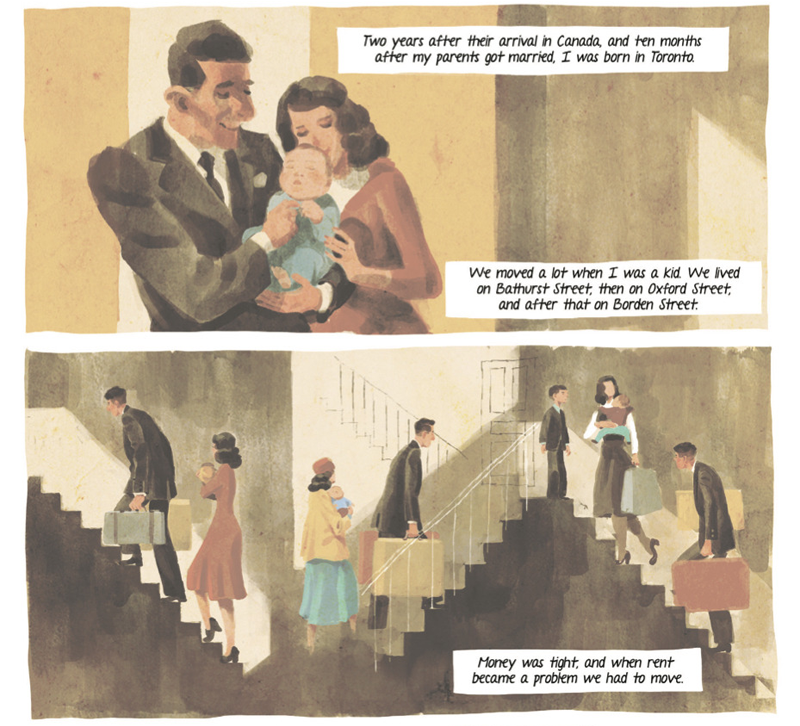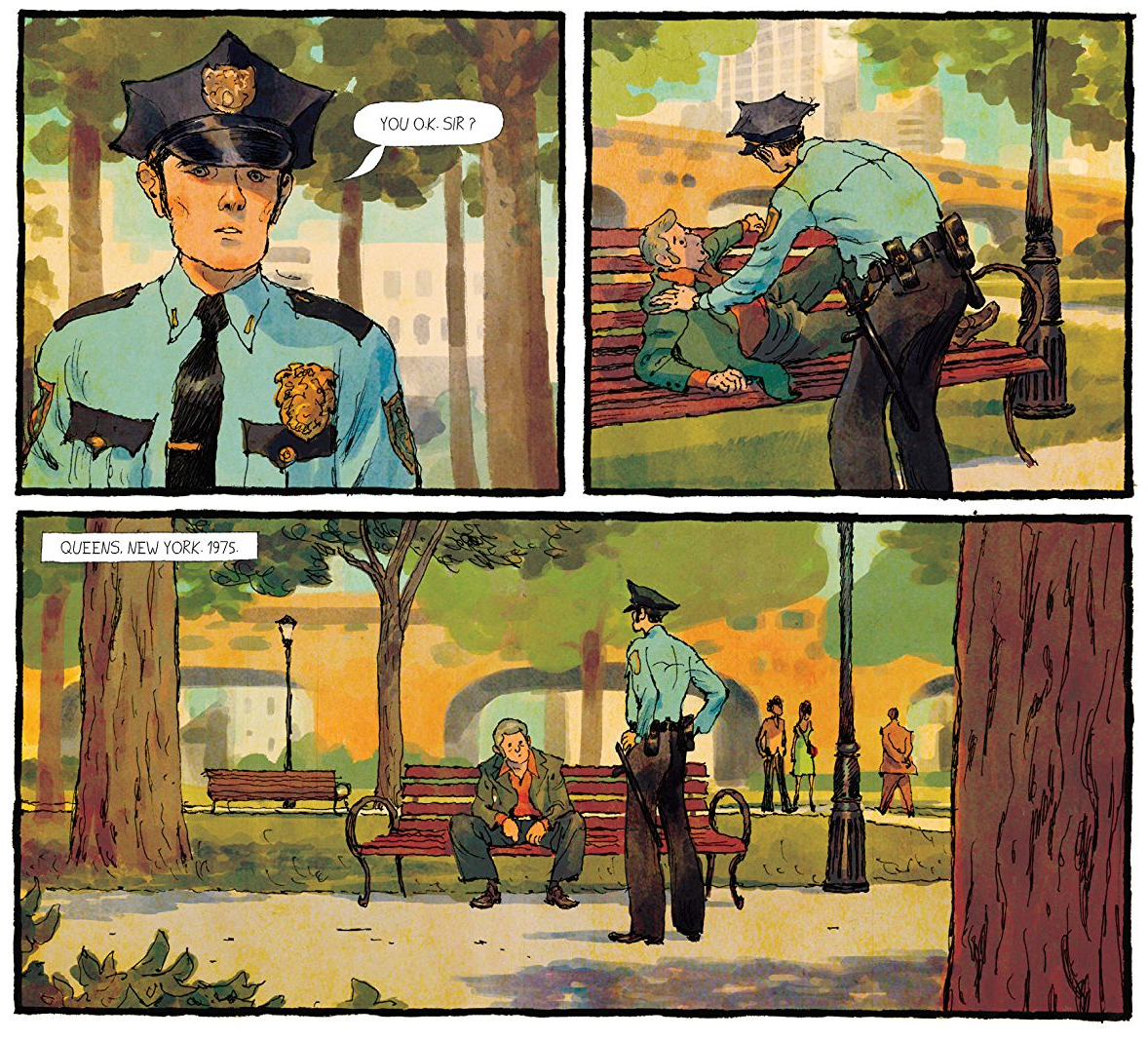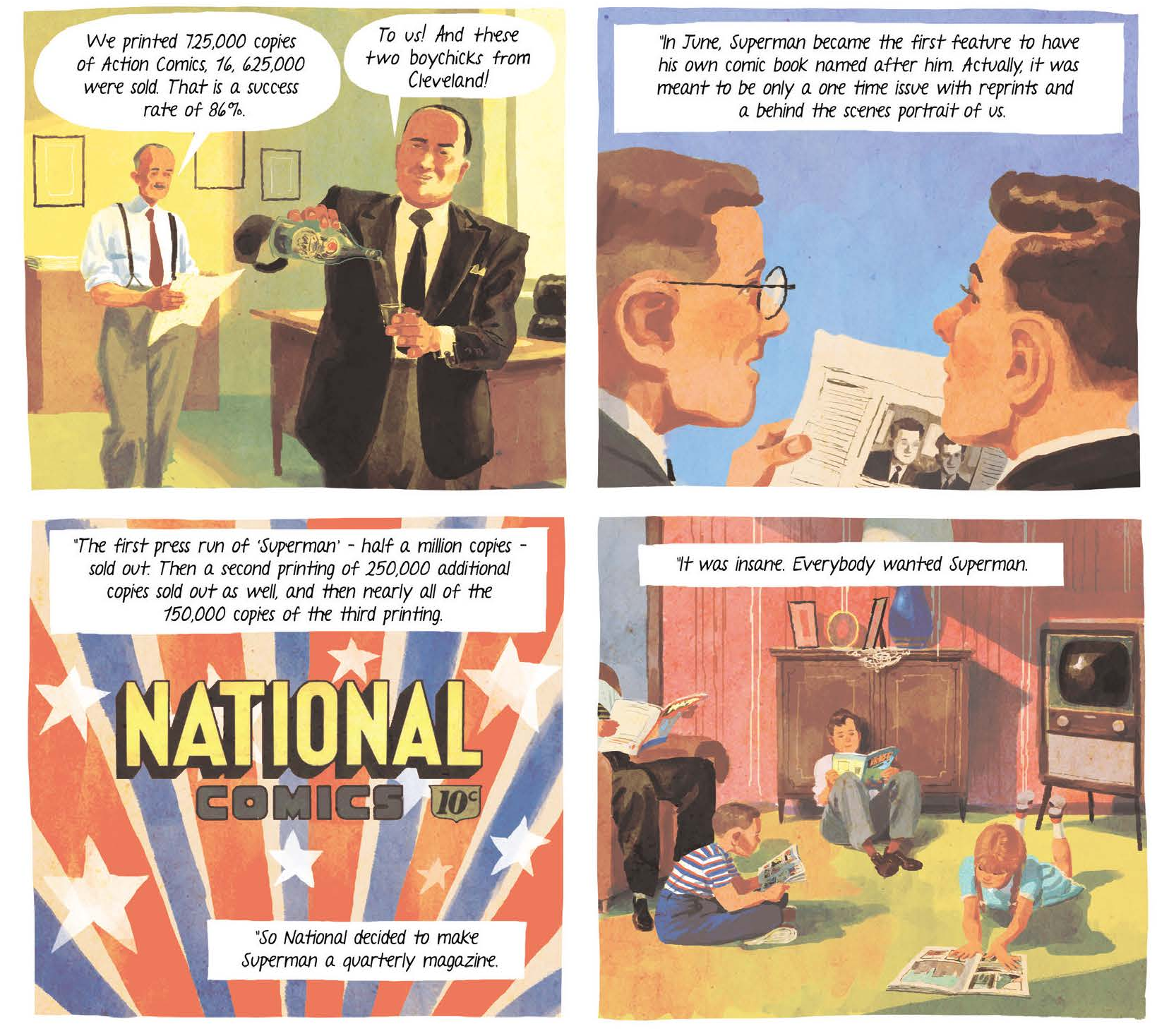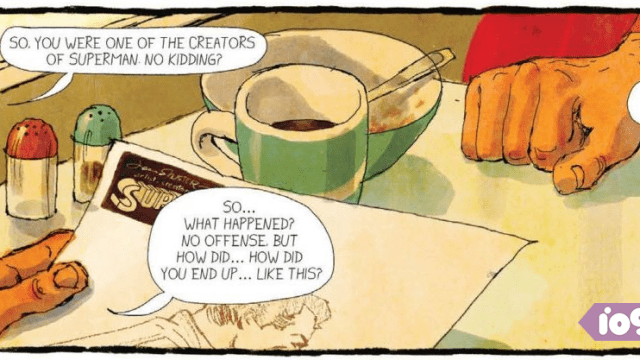Last month, the most iconic superhero in the world, Superman, turned 80. Jerry Siegel and Joe Shuster’s creation of the Man of Steel changed comics forever, and the character’s impact is still felt across the comics industry today. But so is the impact of another, darker aspect of Superman’s origins: A creator’s right to their work.
An elderly Joe Shuster recounts his part in creating a modern legend in The Joe Shuster Story. Image: Thomas Campi (Super Genius Comics)

Released last month to coincide with both the 80th anniversary and the landmark release of Action Comics #1000, The Artist Behind Superman: The Joe Shuster Story – written by Julian Voloj and with art by Thomas Campi – is a reminder not just of the spirit of the two men who forged a legend, but the awful ways they were duped into selling away ownership of their meteoric success, just like so many of their fellow comics creators.
It would take decades of legal battles to eventually secure even a fraction of what Shuster and Siegel’s contributions to comics were actually worth, as well as years of personal heartbreak for both men. It is here that The Shuster Story really takes hold, painting in the personal gaps in the creation and success of Superman alongside the quiet injustice of the careers of the men who created him.

Joe Shuster’s own origin story. Image: Thomas Campi (Super Genius Comics)
Just as the meteoric rise of Superman is the story of truth, justice and the American way, so is Siegel and Shuster’s, two immigrant kids who eventually crossed paths in Cleveland, bonding over a love of pulp sci-fi and their creative talents.
Although Voloj and Campi’s story is primarily framed around Shuster’s life and his perspective, Siegel is an important anchor throughout. The passive nature of Shuster’s personality lends a neutral tone to the biographical narration, but at the same time only rarely invokes his feelings about his and Siegel’s mistreatment.
Siegel is cast as the firebrand of their partnership, contrasted with Shuster’s quieter persona, the one that pushes his friend to keep trying to make it in comics until they eventually strike gold with Superman… and sign a single check that would change both of their lives forever.
A job and $130 were all Siegel and Shuster got out of their creation for years, even as Supermania drove sales of Action Comics through the roof, and the character went on to star in his own radio show, cartoons, and even his own serials.
The success of Superman as a character almost becomes a fringe part of The Shuster Story, replaced by the ugliness that came out of Siegel’s angry attempts to get the credits and rights he and his best friend deserved.
But as times change – the outbreak of World War II, the witch hunt against comics that lead to the creation of the Comics Code Authority, and the slow decline of the superhero genre that the duo had almost single-handedly created in the ’30s – the focus on Shuster pulls the story of the book away from Superman, and instead toward the tragedy of the artist’s own decline.
Failing eyesight and hand spasms eventually saw Shuster work less and less on his art, and when Siegel’s first attempt at suing to get back the rights to Superman lead to the pair losing the steady jobs they’d dreamed of as teenagers, the relationship between the two friends begins to fray and grow distant.

A frail Shuster is picked up off the street in hard times. Image: Thomas Campi (Super Genius Comics)
The crookedness of backroom deals and shady actors in comics’ early days, the eventual decline of Shuster’s health, and the ugliness of early-mid-20th century America at large – from the post-Prohibition world of organised crime, to the war, to the shadow of persecution and prejudice brought about by the rise of the House Un-American Activities Committee in its wake – are all contrasted with Campi’s painterly art style.
It evokes the classic comics aesthetic of the golden and silver ages, while critically using the nostalgia such a style invokes to mask the real bleakness of the times. But it’s no more striking than in the moments we see Shuster at his frailest, eventually picked up off the street by a police officer after leaving his home out of shame of being a burden to his brother, penniless and unable to work.
It’s a haunting reminder of the way so many icons of the comics industry that we know and love today were so poorly treated by the businessmen that capitalised off their work.
The Joe Shuster Story quickly barrels to a happier conclusion, at least. It’s framed around Siegel re-entering his old friend’s life thanks to the then-upcoming Richard Donner film adaptation of Superman in the ’70s, which sparked a ferocious letter from the writer about his and Shuster’s mistreatment over the Superman rights, itself sparking a groundswell of support from the current comics community.
As history shows, the two eventually struck a deal with Warner: A yearly stipend, and credit on both the Superman movies and every Superman comic going forward. Finally, they had a semblance of the justice they deserved after almost 40 years of fighting for recognition.

Superman’s rise changed the comics industry forever – but would go on to shine a light on the fight for creator’s rights. Image: Thomas Campi (Super Genius Comics)
But it’s a story that goes beyond Shuster and Siegel’s own struggles for credit. It’s one that’s felt by many creators in the comics industry, from Bill Finger (a tale briefly touched on in The Joe Shuster Story), to Jack Kirby and beyond. These days, the battles go on not just in comics, but – in an age where Superman and his friends dominate the box office and TV – in other mediums too.
The tragedy and injustice of two of the most important and iconic figures in comics still casts a shadow on a golden age of superheroes. Even as we happily celebrate 80 years of the Man of Steel, the tale Julian Voloj and Thomas Campi tell in The Joe Shuster Story is an important one to have right now – to remind us of the men who gave him to us in the first place.

Comments
One response to “In A New Graphic Novel About Superman’s Origins, The Real Supervillain Is Big Business”
Just like in real life! 😀